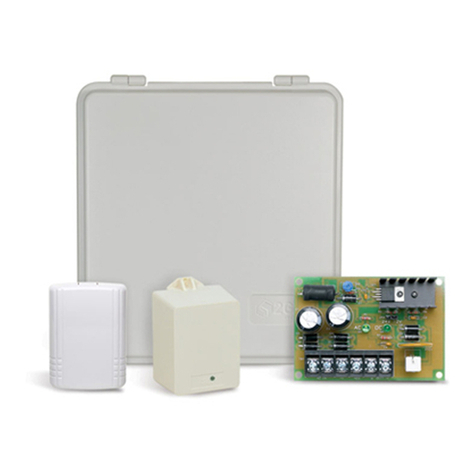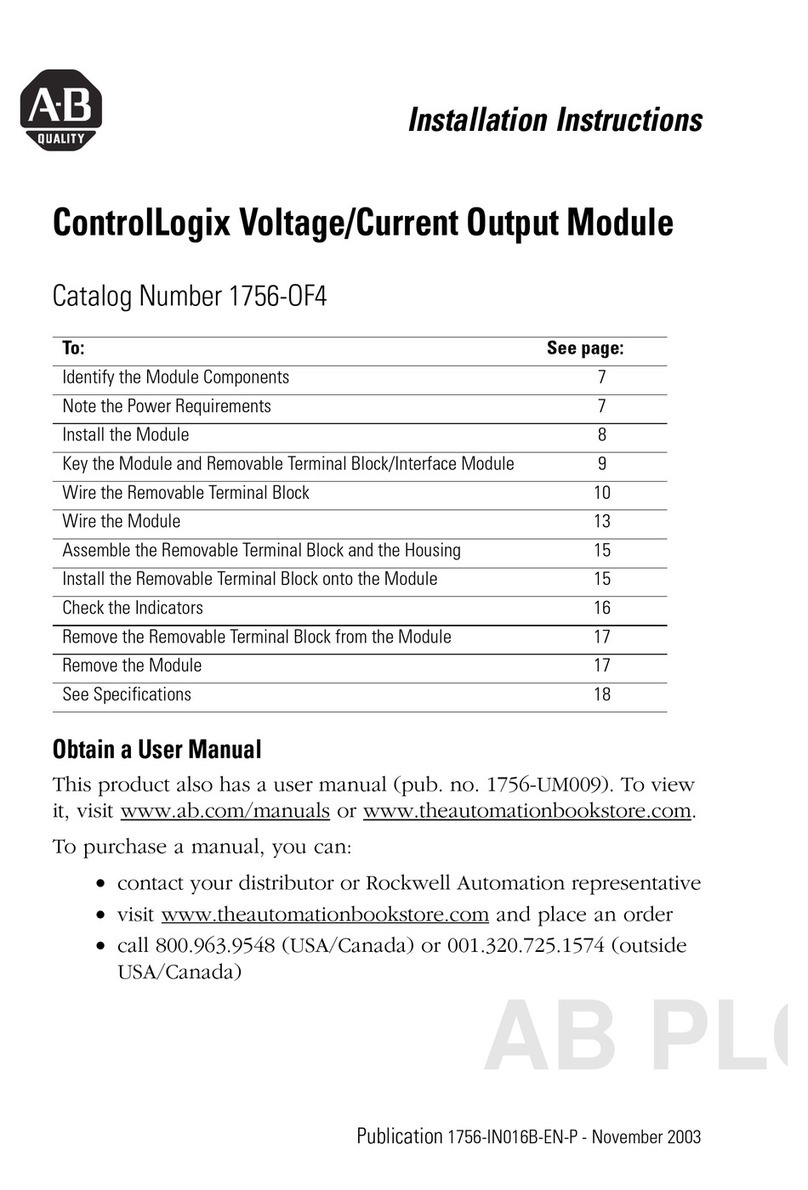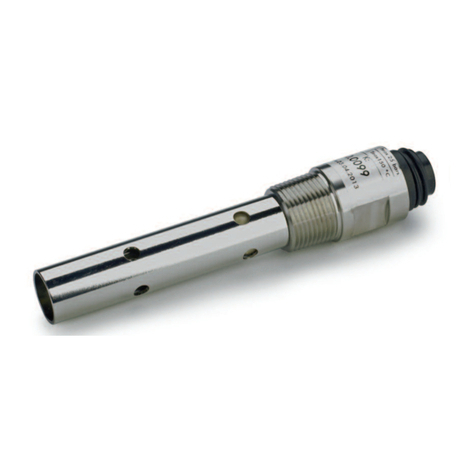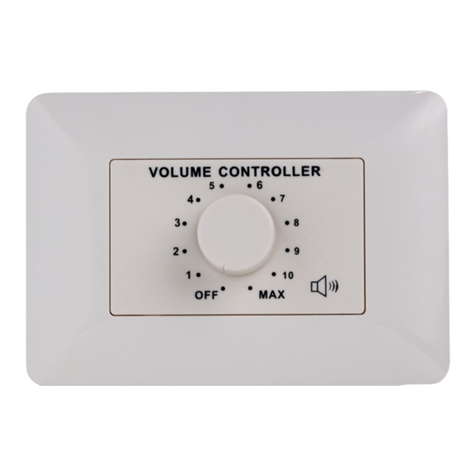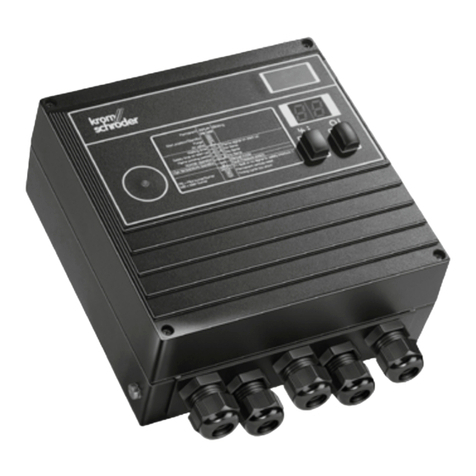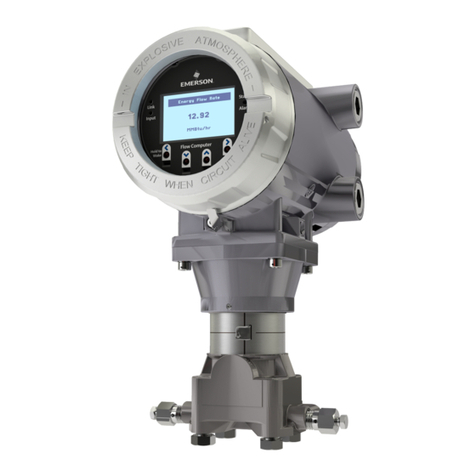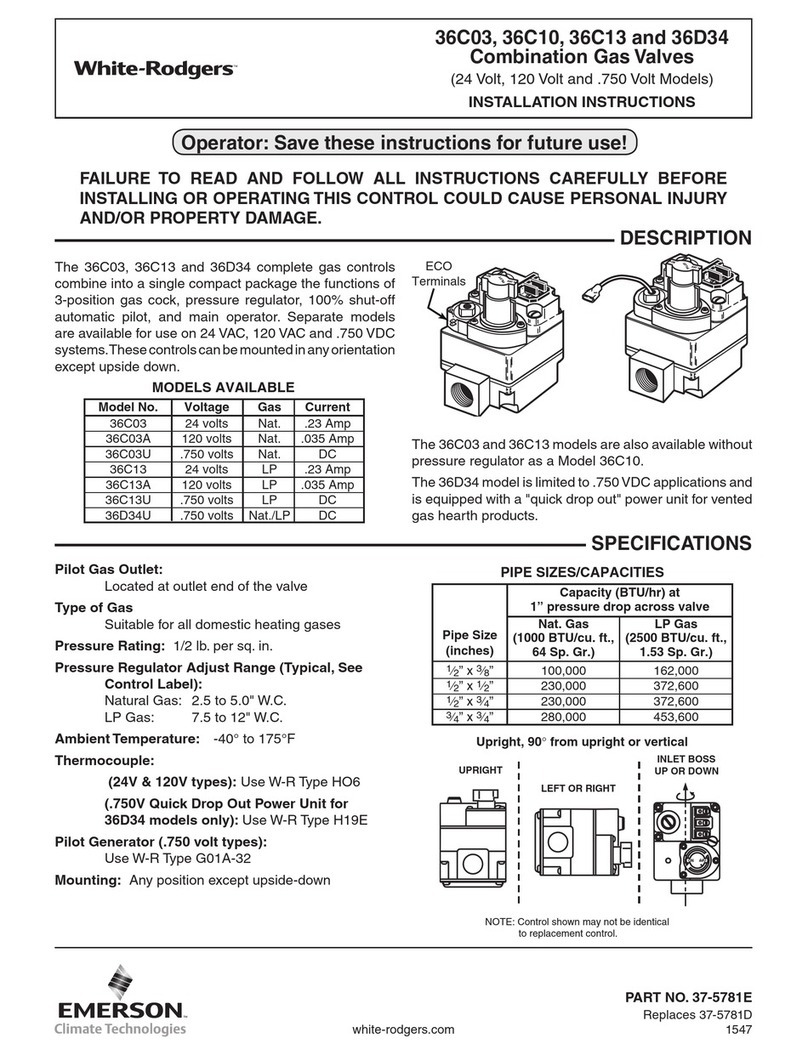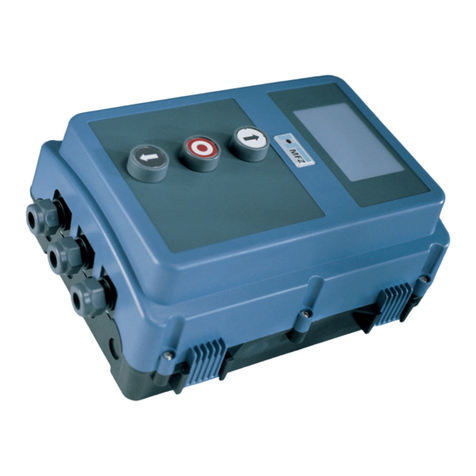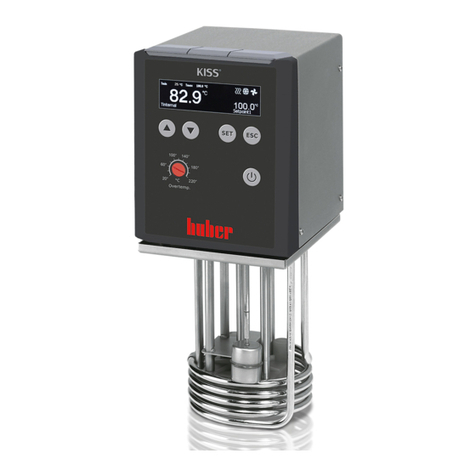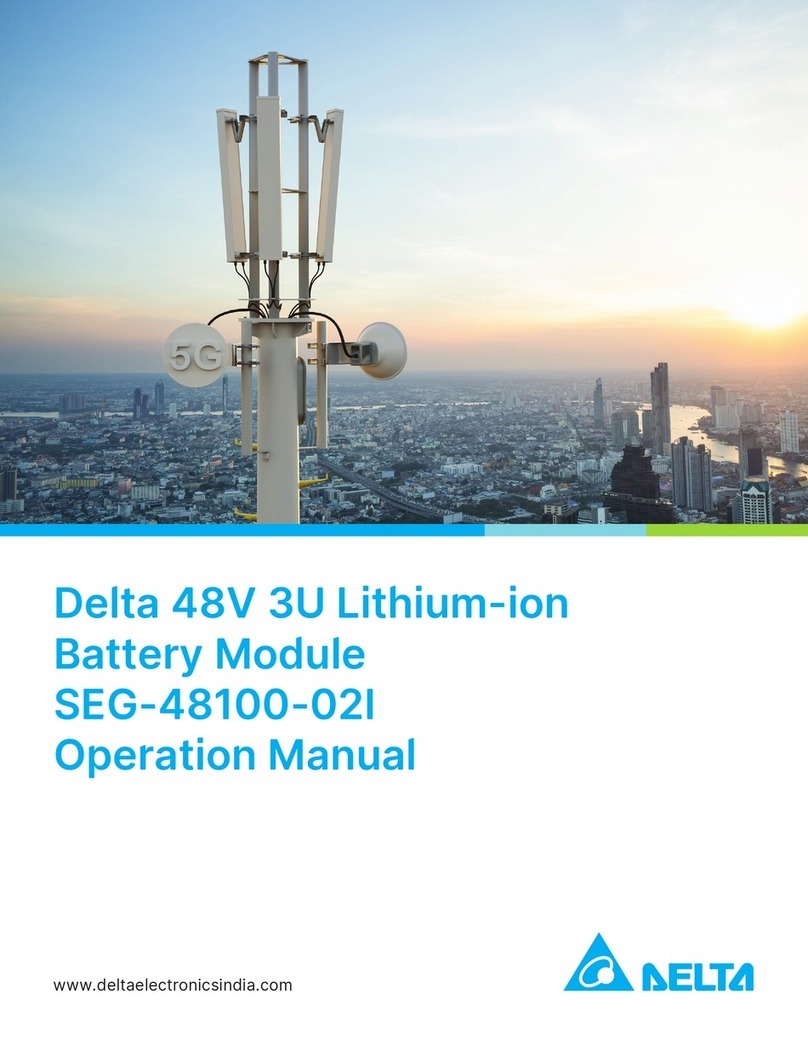Sempell VSE Series User manual

SEMPELL SERIES VSE/VSR FULL LIFT AND NORMAL SAFETY RELIEF VALVE
OPERATING INSTRUCTIONS
Before installation these instructions must be fully read and understood
1 DANGER AND WARNING INDICATIONS
The construction of the Sempell safety valves
corresponds to the latest state of engineering
and the valid safety regulations.
Nevertheless, improper use or improper
installation can cause risks for the personnel
or can lead to restrictions in regard of
the operational safety. Therefore, the
SempellGmbH recommends the operator of
the safety valves to take appropriate measures
and make
sure that the present operating
instructions are read and understood by the
assigned personnel.
ATTENTION
This operating instruction does not specify the
extent of delivery. It is valid for several sizes,
designs, accessories and additional devices.
It contents generally exceeds the contractual
determined extent of delivery.
Series
VSE/VSR Full lift and normal safety relief valve.
VSE 1 open spring bonnet
VSR 1 open spring bonnet and adjusting ring
VSE 2 closed spring bonnet
VSR 2 closed spring bonnet and adjusting ring
VSE 4 closed spring bonnet, weight-loaded
Orifice letters
SKB (Sempell): A - Z
SKB (API): EA - TA
Design
According to TO.271.01./271.02. and
TO.272.01./271.02.
• Spring-loaded (cylindrical compression
spring)
• Weight-loaded
• Roller bearing up 8 kN spring force
• Cooling spacer for medium
temperatures ≥400°C
Attachment
• Pneumatic measuring device A 143 for
adjusting the set pressure at operating
pressure
For the application of a pneumatic actuator
A160 see corresponding operating instruction
VCIOM-02239.
Observe design data on the tagplate!
APPLICATION LIMITS
It is only allowed to use the valves according to
the details of these operating instructions and
according to the parameters and application
cases agreed in the delivery contract (see
nameplate). The application of the valve has to
take place adequate to the medium tolerances of
the used materials.
WARNINGS FOR THE OPERATING AND
MAINTENANCE PERSONNEL
Before commissioning and maintenance works
familiarise yourself with the legal accident
prevention regulations, the local safety
instructions and this operating instruction and
observe them.
Use the safety valve and its individual parts and
accessories only for the purpose intended by us.
Please observe the following points besides
the notes given in the text:
• Danger of burning at safety valves and with
the connected pipes while operating under
increased temperature.
• Disassembly of the safety valve only in case of
pressureless plant and after cooling down.
• Protection against risks caused by
evaporation also in case of pressureless
system; for information please contact the
safety inspector concerned.
• After assembly check all sealing points in
regard of tightness.
• In case of adjustment make changes at
pressure screw and adjusting ring only with
clearly reduced pressure to avoid unintended
response.
• Carry ear protection during adjustment,
ifnecessary.
• Danger of burning by discharge of small
amounts of possibly hot medium in case
of safety valves with open spring bonnet
(VSE1,VSR 1).
• Danger of injury while discharging at
disconnected discharge line.
• Extreme vibrations can lead to inadmissible
increase of operating pressure with the
possibly destruction of the safety valve or to
the destruction of the balanced bellows with
unintentional escape of medium.
VCIOM-02450-EN 16/07
Exclusion of liability
Sempell GmbH cannot be held liable in case
of improper maintenance and adjustment of a
Sempell safety valve, use of inadmissible spare
parts or utilities and in case of a temporary or
permanent connection of equipment with the
safety valve which is not approved by us.
MA.271.01.0116.E
Emerson.com/FinalControl © 2017 Emerson. All rights reserved.

2
SEMPELL SERIES VSE/VSR FULL LIFT AND NORMAL SAFETY RELIEF VALVE
OPERATING INSTRUCTIONS
3 OPERATION
3.1 Warning indications for the operation
Observe safety regulations!
ATTENTION
Unstable behaviour of safety valves such as
chattering or vibrating can destroy the valve seat,
the safety valve or the pipe and thus causing the
failure of the safety function or the shutdown
of the plant. Therefore, observe regulations
and empirical notes regarding design and
dimensioning, fitting and installation.
ATTENTION
Safety valves with weight loading, Series VSE 4,
areblocked for the transport.
Before commissioning remove blocking stem and
mount gag plug (17) with gasket (40).
2 DESCRIPTION
Spring-loaded full lift safety relief valves are
direct acting safety valves for protection of
pressure tanks against inadmissible excess-
pressure.
A cylindrical compression spring creates the
closing force on the valve disc against the
opening pressure of the medium below the
valve disc. At normal operating conditions the
valve seat is held tight.
By changing the spring compression it is
possible to change the set pressure. In case
of exceeding set pressure, the pressure of the
medium prevails and the safety valve opens.
With full lift characteristic the safety valve
opens rapidly at full lift and discharges the
total mass flow necessary to prevent a further
pressure increase.
With normal characteristic the safety valve
reaches the lift necessary for the mass flow to
be discharged after response within a pressure
increase of maximum 10%.
After a defined pressure decrease, the safety
valve closes again.
By means of the lifting lever at the cap the
safety valve can be opened by hand with a set
pressure of 85% at least.
The safety valves are type tested and comply
with the requirements of the standards and
regulations.
• Design and dimensioning: do not use larger
safety valves than necessary! In case of back
pressure use safety valves with bellows.
• Fitting and installation: lay supply line as
short as possible. Use as few bends as
possible.
• Keep supply line free from vibrations.
Absorb or avoid pressure surges and waves,
e.g.caused by pumps or other valves.
• Drain the discharge line and the valve body at
their lowest point. Condensate can impair the
function of the safety valve.
• Protect lines and valve against freezing.
Use within areas exposed to danger of explosion
The safety valves underwent a hazard analysis
according to code 94/9/EC with the following
result:
• The safety valves do not have a potential
ignition source. ATEX 94/9/EC is not
applicable to these valves.
• The valves safety may be used in the EX range
• Electrical / pneumatically accessories have to
undergo a separate assessment of conformity
according to ATEX.
• The surface temperature does not depend
from the valve itself but from the operational
conditions. Observe while installing.

3
A19 EA 42
B19 FA 42
C21
D35 GA 77
E70 HA 155
F - G 80 JA 175
H90 KA 200
J - K 110 LA 245
L150 MA-NA 310
M170
N200 PA 440
P250 QA 555
Q270
R300 RA 665
S300 TA 665
T380
U410
V460
W530
X1260
Y1600
Z1870
SEMPELL SERIES VSE/VSR FULL LIFT AND NORMAL SAFETY RELIEF VALVE
OPERATING INSTRUCTIONS
SKB-DIN
Max. weight [kg] without
accessories about SKB-API
Max. weight [lbs] without
accessories about
3.2 Storage rules
To preclude damages during loading and
unloading, move the valve with suitable lifting
gears. Handwheels and other driving elements
are unsuitable as impact points. The transport
shall preferable take place by cable or
transport pallet.
At delivery provide the outsides of all ferritic
parts of the safety valve except the welding
edges with a coat of paint.
The insides of the body are protected by a
watery corrosion preservative that has a
long-term effect because of the film formative
activeagents.
All connection inlets are closed by
corresponding caps.
In this state the safety valve can be stored in
closed, dust-free and dry rooms lying on a
pallet without difficulties. Time of storage about
six months. Storage of more than six months
asks for disassembly and visual check of the
inner parts of the safety valve. A weather-
protected outside storage is not allowed.
For spare parts out of elastic material
(O-rings, scraper rings, rod and piston gaskets)
additionally apply:
Temperature: the temperature of the storage
shall be between 0°C and 25°C since otherwise
a hardening of the material and so a shortening
of durability will follow. Shield heating elements
and lines in heated storeroom so that no direct
heat irradiation arises. The distance between
the heat source and the stocks has to be 1 m
at least.
Moisture: to prevent the formation of
condensate, avoid moist storerooms. A relative
humidity of below 65% is at best.
Lighting: the products of elastic materials
are to protect from direct sun light and from
strong artificial light with a high ultraviolet
part. Therefore supply the windows of the
storerooms with a red or orange (in no case
blue) paint.
Ozone: protect products of elastic materials
from ozone (formation of cracks and
embrittlement). The storeroom may not
contain ozone generating systems (fluorescing
sources of light, mercury vapour lamps,
electricmotors,etc.).
Oxygen: protect products out of elastic
materials from draught by storage in
airtight tanks. Oxygen causes cracking and
embrittlement.
If these requirements are guaranteed for
products out of elastic materials, the storage
time is about 5 years.
For spare parts out of steel
Store the parts in closed, dust-free and dry
rooms so that damages do not occur.
Especially the following protection
measuresapply:
Disc (4): wax coat of the gasket, net coat
Guide bush (6): protection by net coat

4
X
SEMPELL SERIES VSE/VSR FULL LIFT AND NORMAL SAFETY RELIEF VALVE
OPERATING INSTRUCTIONS
3.3 Installation instructions
NOTE
Clean pipes before installing safety valves as
otherwise the valve seats can be damaged by
foreign bodies when discharging!
Remove transport protection just before
installation.
Check plant identification and details on the
nameplate.
3.3.1 Installation
The installation zone must be easily accessible
for maintenance works. Required free space
above the safety valve see section Dimensions
In case of large safety valves provide for
additional space for lifting gears, at least
500mm.
Position of installation vertical, inlet from
below. Do not brace valve body when fastening;
if necessary compensate bearing of the
supporting brackets.
Lay line in such a way that neither static or
dynamic forces nor forces caused by thermal
expansion may be transferred to the valve body.
PLEASE NOTE
Stresses at the valve body may lead to leaking at
the valve seat!
3.3.2 Inlet line
If possible arrange safety valve directly at the
nozzle of the tank to be protected. Otherwise
lay inlet line between tapping point and safety
valve as short and as poor in resistance as
possible.
In no case the inlet line diameter must be
smaller than the inlet nominal size at the
safetyvalve.
The pressure loss in the inlet line must not
exceed 3% of the set pressure at the greatest
possible discharge quantity.
Check inlet line in regard of pressure vibrations
according to FBR 153 as far as possible.
DIMENSIONS
SKB Overhead dimension X
A - G 300 mm
EA - JA 12"
H - R 700 mm
KA - RA 26"
S - Z 900 mm
TA 36"
3.3.3 Exhaust line
In no case the exhaust line diameter must be
smaller than the outlet nominal size at the
safety valve.
Back pressures in the exhaust line are
admissible up to 15% of the set pressure and
for safety valves with compensating piston
(SN 144) up to 50% of the set pressure, in
case there are no other restrictions, e. g. with
respect to the strength of the body connection
flange.
ATTENTION
Higher back pressures may lead to an unstable,
uncontrollable behaviour of the safety valve;
chattering or vibrating may destroy the valve seat,
the safety valve or the line and thus lead to failure
of the safety function or to shutdown of the plant!
At the deepest point the exhaust line must be
equipped with a drain which is large enough
to enable the discharge of minor leaks, e. g.
in case of untight valve seat. Particularly in
the open air exhaust line, valve body and drain
must be protected against icing and freezing,
e. g. by (electrical) trace heating; merely
insulating is not sufficient!
Do not exchange the drain connection G ¼” at
the valve body for the lock screw (44) at orifice
letters A40 and B40. Removing the lock screw
(44) may change the function of the safety valve!
ATTENTION
An icy, frozen or clogged exhaust line leads to the
failure of the safety function! Danger of explosion
in case of excess-pressure!
CAUTION
In case of several safety valves with one common
exhaust line, take special safety precautions for
disassembling of only one safety valve to exclude
danger in case of unintended discharge of other
safety valves!
Recommendation! Sound isolate exhaust line
and/or provide the same with silencer; in doing
so, regard allowable back pressure!
ATTENTION
A pressure loss higher than the closing pressure
difference may lead to an unstable, uncontrollable
behaviour of the safety valve; chattering or
vibrating may destroy the valve seat, the safety
valve or the line and thus lead to failure of the
safety function or to the shutdown of the plant!
For discharge of condensate in case of gases
and vapours, the inlet line must have a slope to
the tapping point of 15 degrees at least.
ATTENTION
Condensate at the inlet of the safety valve
changes the functional behaviour and may lead
to an inadmissible pressure increase. Danger of
explosion!
In case of liquids with temperatures higher than
the ambient temperature, the inlet line must
be assembled with slope to the safety valve, or
designed as a siphon-type bend in front of the
safety valve. Thereby, a heat transmission to
the safety valve is avoided which could impair
the tightness at the valve seat.

5
SEMPELL SERIES VSE/VSR FULL LIFT AND NORMAL SAFETY RELIEF VALVE
OPERATING INSTRUCTIONS
3.4 Pressure test
The response of the safety valve must be
prevented.
Either flange off the safety valve and close
the supply line with a blind flange or block
the valve. In case of welded-in safety valve a
pressure test insert can be used.
ATTENTION
In case of a blocked safety valve the test pressure
can amount up to 1.5 fold of the set pressure
without consultation with Sempell.
Turn in the blocking screw instead of the gag
plug (17) and tighten it securely by hand so that
the disc (4) is blocked in closed position. In case
of design with supplementary loading (SN 111)
screw off electric solenoid including cooling
spacer and replace it against a cap (13) with
blocking screw SN 100.
ATTENTION
After the pressure test, restore and check the
ready-to-operate state!
3.5 Commissioning
ATTENTION
At safety valves with weight load, Series VSE 4,
remove blocking screw before commissioning and
assemble gag plug (17) with gasket (40).
The safety valve is delivered ready to operate.
The set pressure is adjusted at works and
secured against unauthorized adjustments by
lead seal. Higher medium temperatures can
lower the set point at approx. 1% per 100°C
and ask for a readjustment under operating
conditions. Standard values see table in section
“Adjustment of the set pressure”.
3.6 Operational test
Function and reliability of the safety valves are
proved by the type test. Therefore operational
tests are generally not carried out in the plant.
This is only usual for steam boiler safety valves.
3.7 Discharge test
• Apply ear plugs.
• Slowly increase operating pressure in the
plant until the safety valve has fully opened.
• Lower operating pressure until the safety
valve closes.
In case of several discharge tests with hot
steam allow intermediate cooling down of the
safety valve as caused by heating of the spring a
slight decrease of the set pressure is possible.
ATTENTION
When discharging, some leaking medium may
escape at the open bonnet (8) in case of safety
valves Series VSE 1 / VSR 1. Danger of scalding by
hot steam!
3.3.4 Insulating
In case of hot medium insulate inlet line and
valve body. In case of gases and vapours
insulate inlet line and valve body very carefully
to avoid condensation.
ATTENTION
Condensate at the inlet of the safety valve
changes the functional behaviour and may lead
to an inadmissible pressure increase; danger of
explosion!
The spring bonnet and a possibly mounted
cooling spacer shall not be insulated as with
heated spring the set pressure decreases.
3.8 Adjustment of the set pressure
ATTENTION
A change of the lead sealed spring adjustment
must only take place in the presence of the
competent inspector.
The adjustment of the set pressure takes place
on the test stand. If the set pressure is adjusted
in the plant, the pneumatic measuring device
A 143 should be applied as by means of this
device the set pressure can be adjusted without
increasing the operating pressure.
ATTENTION
Adjusting only with lowered pressure. At operating
pressure working on the tightening screw (11)
may lead to unintended response of the safety
valve. When discharging, some leaking medium
may escape at the spindle guide of the tightening
screw (11). Danger of scalding by hot steam!
Precision of the set pressure adjustment: ± 3%
Remove lead seal. Unscrew cap (13). Loosen
lock nut (28). For working at the tightening
screw (11) secure spindle (7) e. g. with a pin
against rotation as otherwise the valve seat
may be damaged.
Tighten tightening screw (11) (turn right):
setpressure higher
loosen tightening screw (11) (turn left):
setpressure lower
After the adjustment secure tightening screw
(11) with lock nut (28). Mount cap (13) and
leadseal.
Standard values for the change of the set
pressure in % for a quarter turn of the
tightening screw(11):
Orifice letter SKB Changes in %
AIV EAIV 10
AI-III, B, C EAI-III, FA 7
D-H GA-KA 4
J-M LA-NA 3
N-R PA-RA 1.5
S-W TA 1
X-Z 0.5

6
SEMPELL SERIES VSE/VSR FULL LIFT AND NORMAL SAFETY RELIEF VALVE
OPERATING INSTRUCTIONS
For set pressures below 3 bar the closing pressure difference may be up to 0.3 bar.
3.9 FUNCTIONAL DIFFERENCES
VSE 1 Standard
VSE 1 with compensating
pistonSN144
VSR 1 (with adjusting ring)
Standard
VSR 1 with compensating
pistonSN144
Opening pressure difference +5% +3% +3% +3%
Closing pressure difference -10% -10% -8% -6%
VSE 2 Standard
VSE 2 with valve seat
forliquidsSN123
VSR 2 (with adjusting ring)
Standard
VSR 2 with valve seat seat
forliquidsSN 123
Opening pressure difference +5% +10% +3% +10%
Closing pressure difference -10% -20% -8% -10%
Changing the closing pressure difference
forVSR 1 and VSR 2
After removing the lock screw (44), the closing
pressure difference can be changed by means
of the adjusting ring (14). The sum of opening
and closing pressure difference remains
approximately the same.
ATTENTION
Remove lock screw (44) only with lowered
pressure. At operating pressure adjusting the
adjusting ring (14) may lead to unintended
response of the safety valve. When discharging
the safety valve or in case of untight valve
seat, medium may escape out of the opened
adjusting bore. Danger of scalding by hot media,
e.g.steam!
For adjusting, put screwdriver through the
opening and adjust adjusting ring (14) groove by
groove. Its graduation equals about 0.2 mm of
vertical adjustment.
Screw adjusting ring (14) up = closing pressure
difference lowers. Turn in and tighten lock
screw (44) again.
3.10 TROUBLE SHOOTING
Malfunction Cause Remedies
Safety valve opens at different pressures. 1. Condensate in the inlet line. 1. Improve insulation of line. Observe drain and slope.
2. Pressure change by superimposed vibration. 2. Suppress vibrations at the safety valve.
Safety valve opens and closes in rapid
succession.
1. Pressure loss in the inlet line is greater than the closing
pressure difference.
1. For VSR enlarge closing pressure difference. Otherwise
reduce flow resistance of the inlet line: expand, shorten
or remove constrictions. Fast remedy: decrease lift
(asfar as allowed), therefore diminish outflow.
2. Discharge quantity is too small because the subsequent
flow is too small.
2. Install smaller safety valve or adjust discharge quantity.
3. Admissible back pressure is exceeded in the exhaust line. 3. Decrease flow resistance of the exhaust line: e.g. by
expanding or shortening the line.
4. Dynamic pressure drop in the inlet line, especially in case
of liquids.
4. Provide safety valve with a vibration damper.
Closing pressure differences are too great. 1. Saturated steam with high moisture. Adjusting ring (14) of
VSR is not adjusted correctly.
1. For VSR change closing pressure difference.
Safety valve stays open after
dischargetest.
1. Foreign bodies between seat zone (3) and disc (4). 1. Repeat discharge test or blow off foreign bodies by
lifting the lever (36). Otherwise disassemble valve.
Safety valve fails to close tightly. 1. Valve seat damaged. 1. Disassemble valve. Rework valve seat and disc (4).
2. Difference between operating and set pressure is too small. 2. Enlarge difference or mount supplementary loading.
3. Body forming by line forces. 3. Lay line elastically.
4. No slope of the inlet line in case of hot liquids. 4. Assemble inlet line with slope to the safety valve or lay
siphon-type bend.

7
SEMPELL SERIES VSE/VSR FULL LIFT AND NORMAL SAFETY RELIEF VALVE
OPERATING INSTRUCTIONS
4 INSPECTION AND MAINTENANCE WORKS
Determine inspection intervals depending
on frequency of response and operating
conditions. Keep certificates about performed
works at the safety valve.
Before commissioning again drain safety valve.
While controlling
• Check valve for tightness. In doing so, take
care of the following indications: whistling
noises, medium at the bonnet, medium at the
drain nozzle or in the exhaust line.
Inspection
• Check each sealing. Replace if leaky.
• Check seat faces.
• Smooth valve seat and disc (4) with fine
lapping paste. If necessary, replace disc (4).
• Equalize guide areas of the spindle (7); when
doing so, do not apply material removing
machine works.
ATTENTION
Do not treat valve seats, metallic sealing surfaces
and sliding guides in contact with the medium.
ATTENTION
For oxygen application all parts in contact with
the medium must be free from oil and grease.
Dangerof explosion!
5 DISASSEMBLY
5.1 Danger and warning indications
Take work order and wait until the installation is
switched free.
Check if the valve is pressureless and
cooleddown.
Residual medium may escape when opening and
disassembling the valve; also at pressureless
plant further evaporations are possible.
Before disassembly switch off electrical supply,
loosen plug or disconnect cable.
5.2 Instructions for disassembly
• First dismount supplementary loading.
Disassemble position indicator only if
necessary.
• For works at lifting nuts (12) or tightening
screw (11) secure the spindle (7) e. g. with a
pin against torsion as otherwise the valve seat
can be damaged.
Loosen nuts (9.1) only when the spring (10) is
released as the studs (9) cannot absorb the initial
stress in the spring (10).
5.3 Tools
• fixed spanner 10 - 80 mm
• socket wrench 17 mm
• screwdriver 8 mm
• retaining ring pliers for outer rings
• flatnose pliers
• side cutting pliers
• hammer
• punch Ø 2,5; 3; 4 mm
• seal wire
• lead seal
• lead-sealing pliers
• vernier calliper
• lapping wheel
• washer for M10, M16, M24
In case of very great safety valves (SKB X, Y
and Z) it is possible that there are other parts
or parts arrangements than described in this
operating instruction because of special design
conditions. Please observe special, order
specific assembly drawing.
5.4 Operating materials
5.4.1 Lubricating the removable valve components
To lubricate the removable or detachable
valve components during assembly, use the
greases specified in Table A. Removable or
detachable valve components are all screw
connections, especially pressure-retaining
screw connections, and other components
within the distribution of forces. All removable
or detachable valve components are lubricated
with the same grease if they are lubricated in
the assembly process.
The operating temperature of the valve is
definitive for selecting the grease to be applied
for the removable valve components (cf. Table A).
At larger intervals, e.g. each 3 years
• Completely disassemble safety valve.
• Clean and check valve parts.
• Smooth valve seat and disc (4) with fine
lapping paste. If necessary, replace disc(4).
Incase of rework observe functionally
important outlines at the valve seat.
• Replace spring (10) when damaged by
corrosion or temperature and readjust set
pressure.
• Equalize guide areas of the spindle (7); when
doing so, do not apply material removing
machine works.
• Lubricate roller bearing (48) and tightening
screw (11).
• Treat ball (18), sliding guides not in contact
with the medium, fits, gaskets and threads
with an assembling lubricant.

8
SEMPELL SERIES VSE/VSR FULL LIFT AND NORMAL SAFETY RELIEF VALVE
OPERATING INSTRUCTIONS
TABLE A: Greases for lubricating the removable valve components
Design temperature of the valve TBGrease
TB< 400°C Molykote®BR 2 Plus [1]
400°C ≤ TB< 700°C Molykote®P 37 [1]
[1] Before applying the grease, ensure that the surfaces are metallically blank (free of oil, grease, etc.) and free of
dirt particles.
The greases specified in Table A are manufactured and/or supplied by the following
manufacturers and/or suppliers:
Grease: Manufacturer / Supplier:
Molykote®BR 2 Plus Dow Corning GmbH Wiesbaden
Rheingaustr. 34, 65201 Wiesbaden
Molykote®P 37 Dow Corning GmbH Wiesbaden
Rheingaustr. 34, 65201 Wiesbaden
ATTENTION
For oxygen application all parts in contact with the medium must be free from oil and grease.
Dangerof explosion.
5.4.2 Lapping abrasives
It is necessary to use special lapping abrasives that contain finely distributed hardened particles
for lapping seat surfaces on body and disk seats. The lapping abrasive specified in Table B is
recommended by Sempell:
TABLE B: Lapping abrasives, suitable for the finishing of valve seats
Lapping abrasive: Manufacturer / Supplier:
TETRABOR®
Boron carbide (F 100 - F 1200)
ESK Ceramics GmbH & Co. KG
Max - Schaidhauf-Str. 35, 87437 Kempten - Germany
Lapping abrasive for disc out of material 1.4980:
Diamond suspension 2 - 30 µm.
Mikrodiamant GmbH, Ostfildern
5.4.3 Further operating materials
Further required operating materials and their usage are specified in Table C and are
manufactured and/or supplied by the following manufacturers and/or suppliers:
TABLE C: Further operating materials
Usage Type Manufacturer / Supplier
Degreasing agent Isopropylalkohol (2-Propanol)
Assembly lubricant (colloidal graphite)
for parts in contact with the medium
DAG®156 Acheson Industries, Dornstadt
O-ring grease Molykote®55 Dow Corning GmbH Wiesbaden
Rheingaustr. 34, 65201 Wiesbaden

9
MxI
c
D
a
b
AEA III - IV 106 152 10 160 M12 x 65
BFA III 106 152 10 160 M12 x 65
IV 104 194 10 180 M12 x 65
CIII 106 152 10 160 M12 x 65
IV 104 194 10 180 M12 x 65
DGA I98 140 10 150 M8 x 55
II 106 152 10 160 M12 x 65
III - IV 104 194 10 180 M12 x 65
EHA I98 140 10 150 M8 x 65
II 106 152 10 160 M12 x 65
III - IV 104 194 10 180 M12 x 65
F I 126 180 12 190 M12 x 65
I - IV 138 196 15 200 M16 x 80
GJA I - II 138 196 15 210 M16 x 80
III - IV 138 196 15 210 M16 x 80
HKA I - II 160 230 15 250 M16 x 80
III - IV 160 230 15 250 M16 x 80
JI - III 184 262 15 290 M16 x 80
IV 184 262 15 290 M16 x 80
KLA I - IV 192 274 15 300 M16 x 80
LMA, NA I - IV 200 286 15 310 M16 x 80
MI - IV 230 328 15 370 M16 x 80
NPA I -III 242 344 20 380 M20 x 100
PI -III 288 410 20 460 M20 x 100
QQA I -III 288 410 20 460 M20 x 100
RRA I -III 288 426 20 480 M20 x 100
STA I350 350 25 430 M20 x 135
T I 400 400 30 480 M20 x 135
U I 450 450 30 530 M20 x 140
V I 550 550 30 680 M20 x 140
W I 640 640 30 780 M20 x 140
X I 720 720 60 900 M24 x 180
Y I 860 860 60 1050 M24 x 180
Z I 950 950 60 1140 M24 x 180
SEMPELL SERIES VSE/VSR FULL LIFT AND NORMAL SAFETY RELIEF VALVE
OPERATING INSTRUCTIONS
5.5 Dismantling the safety valve
To remove or disassemble a possibly mounted
pneumatic actuator A160 see operating
instruction MA.270.07.xxxx E.
Remove lead seal. Dismount cap (13). Remove
split pin (29) and lifting nuts (12) or loosen and
remove checked lifting nuts (12). Measure and
record distance between upper edge of spindle
(7) and tightening screw (11). Loosen lock
nut (28) and release spring (10) by means of
tightening screw (11).
Loosen nuts (9.1) and lift off bonnet (8). Remove
spring (10), cooling spacer (15) (if installed),
gasket (26), spindle (7) and guide bush (6). In
case of VSR 1 and VSR 2 do not change position
of the adjusting ring (14); mark, if necessary.
Remove disc (4) and ball (18); at orifice letter
SKB: D - W drive out dowel pin (19). The guide
piston (5) will not be disassembled. Dismount
cap (13) with lever (36) only if necessary.
6 ASSEMBLY
For SKB D - W: fasten disc (4) and ball (18) by
means of dowel pin (19) to the spindle (7).
Insert guide bush (6); for VSR 1 and VSR 2
observe marked position of the adjusting ring
(14). Insert disc (4), ball (18) and spindle (7).
Put over cover (16) possibly with slide ring (43).
According to design put on cooling spacer (15),
split ring (20), stop bush (21), distance bush
(22), pressure bush (23), spring stop (24), spring
(10), spring plate (25) and roller bearing (48).
Put on bonnet (8) and screw tight with
hexagonal nuts (9.1). Prestress spring (10) by
means of tightening screw (11) onto the same
dimension as measured before disassembling;
thus the same set pressure as before. Secure
tightening screw (11) with lock nut (28). Screw
on two lifting nuts (12) at the upper end of the
spindle (7) and secure them or screw on lifting
nuts (12) and tighten with split pin (29).
Mount cap (13) and lead seal. Check easy
motion and function of the lever (36) with fork
(31). If available, mount supplementary loading.
7 DIMENSIONS FOR MOUNTING BRACKET
Orifice letter SKB Dimensions in mm
Sempell API Group a b c D Thread

10
f1 f2
do
d1 b
A - IV 13 14.4 1.05 1.20 0.5 0.4 1.1
AEA I - III 18 19.9 1.30 1.45 0.5 0.4 1.1
B-C FA I - IV 18 19.9 1.30 1.45 0.5 0.4 1.1
D-E GA-HA I - IV 24.5 27.1 1.20 1.35 1.0 0.6 1.1
F - I - IV 28 30.9 1.30 1.45 1.0 0.6 1.1
GJA I - IV 33 36.4 1.30 1.45 1.0 0.8 1.6
HKA I - IV 38 41.9 1.55 1.70 1.0 0.8 1.6
J - I - IV 44 48.5 1.25 1.45 1.0 1.0 1.6
KLA I - IV 51 56.2 1.40 1.60 1.0 1.0 1.6
LMA-NA I - IV 59 65.0 1.50 1.70 1.0 1.3 2.1
M - I - IV 69 76.0 1.50 1.70 1.0 1.3 2.1
NPA I - III 80 88.1 1.45 1.75 1.5 1.6 2.1
PQA I - III 93 102.4 1.30 1.60 1.5 1.6 2.1
Q - I - III 107 117.7 1.35 1.65 1.5 1.9 2.6
RRA I - III 126 138.6 1.40 1.70 1.5 1.9 2.6
SPZ TA I[3] [3] [3] [3] [3] [3] [3]
SEMPELL SERIES VSE/VSR FULL LIFT AND NORMAL SAFETY RELIEF VALVE
OPERATING INSTRUCTIONS
8 FUNCTIONALLY IMPORTANT OUTLINES AT THE VALVE SEAT
Functionally important outlines in mm
Orifice letter SKB do d1 b b f1 f2[1] f2[2]
Sempell API Group H8 - 0,1 min. max. - 0,3 - 0,1 - 0,1
1. For gases, vapours and liquids
2. For steam
3. From orifice letter S on request
Valve seat for gases,
vapours,steam
Valve seat for liquid Lapping wheel with
grooveforliquid

11
SEMPELL SERIES VSE/VSR FULL LIFT AND NORMAL SAFETY RELIEF VALVE
OPERATING INSTRUCTIONS
10 DECLARATION TO EC-DIRECTIVE
The declaration of conformity can be found in
the documentation.
9 METHODS TO PRODUCE SUPERFINISHED
SEALING SURFACES
ATTENTION
Lapping is a precision operation and must
be carried out by trained personnel. Various
operating areas ask for various operating
methods.
9.1 Lapping area production
9.1.1 Disc
Parts with flat seats are normally machine
lapped.
Procedure:
Allow boron carbide lapping emulsion
(amixture of grade 800 lapping powder and
lapping oil) to drip onto the constantly rotating
lapping machine wheel. Load the items to
be lapped into a suitable locator that is set
eccentrically to the table.
The lapping operation takes 15 to 20 minutes
depending on the quality of the prepared
sealing surface. Afterwards the parts will be
polished. In case of parts made of material
1.4980 the parts will additionally polished on
a tin plate with a diamond suspension; grain
size 2 - 3. A sight control and a test with an
interference glass follow to check whether the
surface is plane and not convex or concave.
9.1.2 Valve seat
The preferred method is hand operated
machine lapping in case the valve seat is
installed in the body (screwed in, welded in or
in another connection). Thereby it is important
that the required force is constantly and
steadily transferred through a spring.
Procedure:
Grinding and/or lapping foils of different grain
sizes are pasted onto a plain carrier wheel of
the machine. The prepared seating areas with
3.2 Ra roughness are alternately lapped with
grain sizes of 200-600-1000. After lapping with
200 grain size, there should be no visible tool
marks. The change takes place at intervals
of about 1 minute. Lapping is carried out with
oscillating movements. Finally the seating area
is cleaned and visually inspected.
9.2 Lapping area site
As a rule, there is no lapping machine available
so only a manual method or the method
described in section 9.1.2 can be used.
9.2.1 Disc
Depending upon their size, lap the parts on
glass plates or discs or rings made of grey cast
iron. Lapping abrasive: Tetra Bor lapping paste
(grade 120 to 1200).
Procedure:
Up to a size of about 200 mm diameters lap
the parts on the plates. In case of greater
diameters, use the part to be lapped as a pad
and move the discs or rings. Thinly distribute
the lapping abrasive on one side and up a
grain size > 400 additionally sprinkle it with oil
drops. Oscillatingly move the valve part or the
lapping wheel with constant hand pressure.
This operation takes several minutes. Remove
the paste with a cold cleaning and repeat the
procedure using progressively finer lapping
paste. Finally a sight control follows.
Up to a size of approx. 200 mm diameter lap the
discs with a mobile manual lapping machine
according to section 9.1.2.
9.2.2 Valve seat
Procedure see section 9.1.2.
ATTENTION
Check body seats regularly to verify that the seat
surfaces are still rectangular to the body center.
Ifthis is not the case, restore squareness by using
a flat grinding machine.

12
17
40
29
12
13
41
28
39
11
51
25
48
10
7
24
23
22
9
9.1
8
26
16
6
5
18
19
4
2
3
1
SEMPELL SERIES VSE/VSR FULL LIFT AND NORMAL SAFETY RELIEF VALVE
OPERATING INSTRUCTIONS
11 PART LIST AND ASSEMBLY DRAWINGS VSE 1 AND VSR 1
VSR 1, SKB J - R, WITH ADJUSTING RING PARTS LIST
Part Name
1Inlet nozzle
2Body
3Seat zone
4 • Disc
5Guide piston
6Guide bush
7Spindle
8Bonnet
9Stud
9.1 Nut
10 Spring
11 Tightening screw
12 Lifting nut
13 Cap
14 Adjusting ring
15 Cooling spacer
16 Cover
17 Gag plug
18 • Ball
19 • Dowel pin
22 Distance bush
23 Pressure bush
24 Spring stop
25 Spring plate
26 • Gasket
28 Nut
29 Split pin
30 Bush
31 Fork
32 Square shaft
36 Lever
37 Washer
38 Hexagon nut
41 Cap screw
43 Slide ring (for SN 144)
44 Lock screw
45 Gasket
47 Circlip
48 Roller bearing
51 Pressure plate
51.1 Bearing bush
54 Guard ring
55 Baffle plate
• Recommended spare parts

13
38 37 36 35 34 33 32 31 30
43
15
17
40
13
29
12
41
28
39
64
11
25
51
51.1
48
10
8
7
24
23
9
9.1
27
15.4
15.3
15.2
15
26
6
5
18
19
4
2
3
1
VSE 1, SKB S - Z
SEMPELL SERIES VSE/VSR FULL LIFT AND NORMAL SAFETY RELIEF VALVE
OPERATING INSTRUCTIONS
SCREWED CAP
SKB A - H
FLANGED CAP
SKB J - Z
ACCESSORY 110 COOLING SPACER
as spring protection at operating
temperatures between 400°C and - 90°C
ACCESSORY 144 COMPENSATING PISTON

14
17
40
29
12
13
41
28
39
11
51
25
48
10
7
24
23
22
9
9.1
8
26
16
6
5
18
19
4
2
3
1
VSE 2, SKB J - R
SEMPELL SERIES VSE/VSR FULL LIFT AND NORMAL SAFETY RELIEF VALVE
OPERATING INSTRUCTIONS
12 PART LIST AND ASSEMBLY DRAWINGS VSE 2 AND VSR 2
PARTS LIST
Part Name
1Inlet nozzle
2Body
3Seat zone
4 • Disc
5Guide piston
6Guide bush
7Spindle
7.1 Screw bolt
8Bonnet
9Stud
9.1 Nut
10 Spring
11 Tightening screw
12 Lifting nut
13 Cap
14 Adjusting ring
15 Cooling spacer
16 Cover
17 Gag plug
18 • Ball
19 • Dowel pin
22 Distance bush
23 Pressure bush
24 Spring stop
25 Spring plate
26 • Gasket
28 Lock nut
29 Split ring
30 Bush
31 Fork
32 Square shaft
33 Bottom ring
34 Packing
35 Gland
36 Lever
37 Washer
38 Hexagon nut
39 Gasket
40 Gasket
41 Cap screw
44 Lock screw
45 Gasket
48 Roller bearing
• Recommended spare parts

15
38 37 36 35 34 33 32 31 30
6
44
45
14
15
17
40
13
29
12
41
28
39
64
11
25
51
51.1
48
10
8
7
24
23
9
9.1
27
15.4
15.3
15.2
15
26
6
5
18
19
4
2
3
1
VSE 2, SKB S - Z
SEMPELL SERIES VSE/VSR FULL LIFT AND NORMAL SAFETY RELIEF VALVE
OPERATING INSTRUCTIONS
SCREWED CAP
SKB A - H
FLANGED CAP
SKB J - Z
ACCESSORY 110 COOLING SPACER
as spring protection at operating temperatures
between 400°C and - 90°C
VSR 2 WITH ADJUSTING RING (TO SKB S)

16
© 2017 Emerson. All rights reserved.
This manual suits for next models
6
Table of contents
Popular Control Unit manuals by other brands

Kon.El.Co
Kon.El.Co HEYROLL + manual
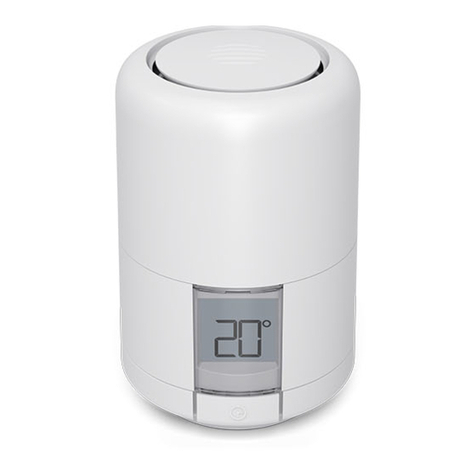
Hive
Hive Radiator Valve user guide
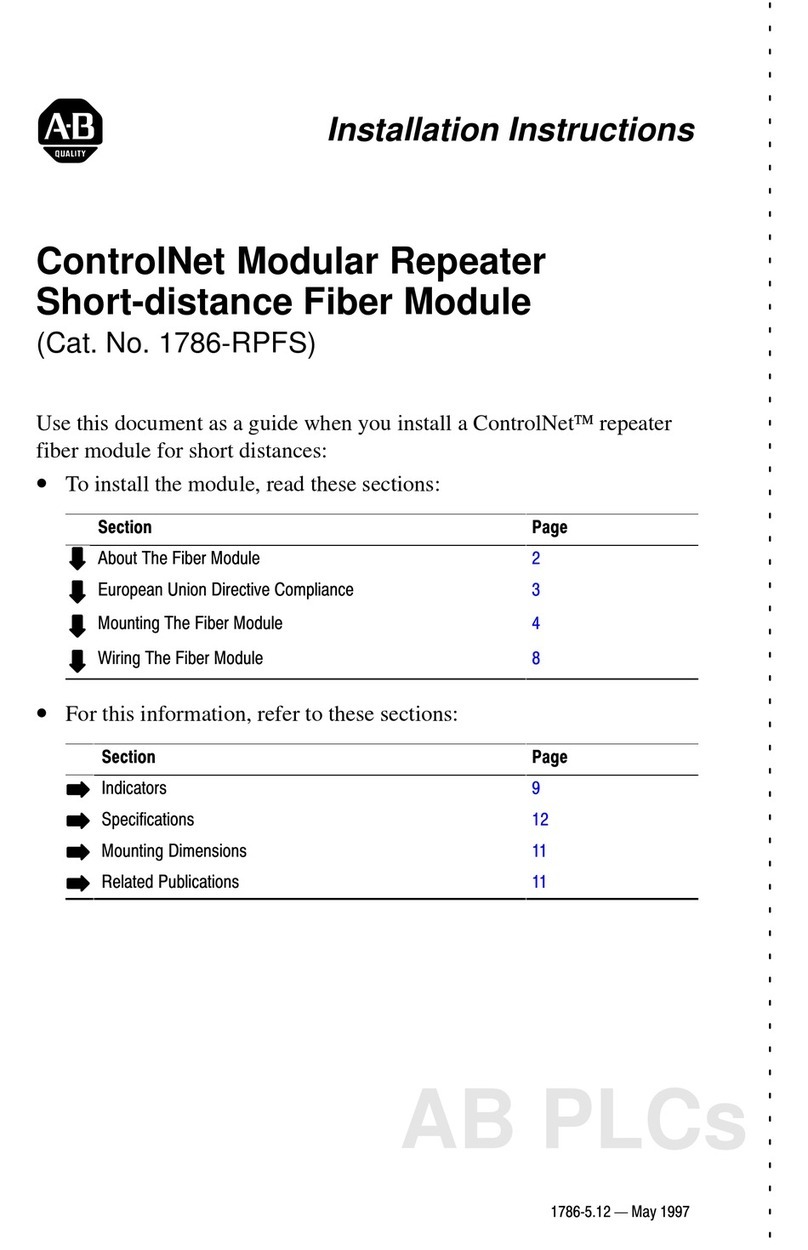
Allen-Bradley
Allen-Bradley ControlNet 1786-RPFS installation instructions
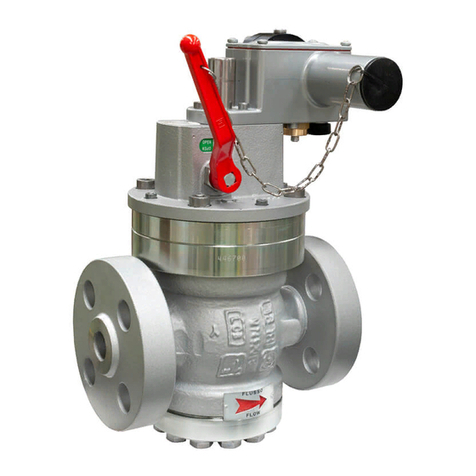
PIETRO FIORENTINI
PIETRO FIORENTINI SBC 187 Technical manual
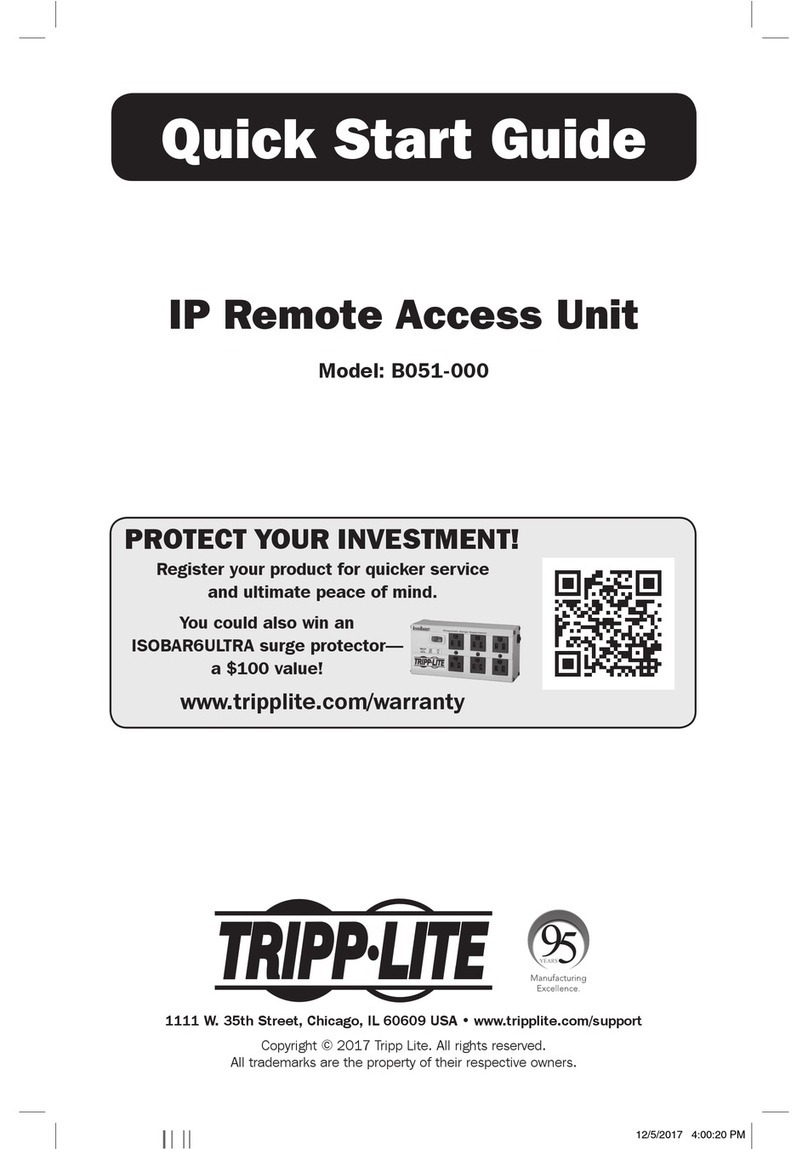
Tripp Lite
Tripp Lite IP Remote Access Unit quick start guide

Krom Schroder
Krom Schroder BCU 370 operating instructions
